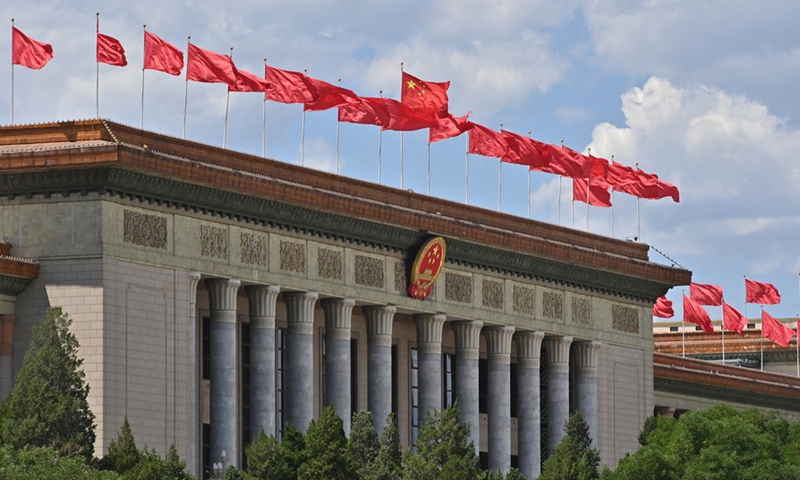Subscribe for our News

A New Five Year Plan and the Next Stage of China's Innovative Development
In 2021, China will start implementing the innovation development strategy described in the next, 14th Five-Year Plan for 2021-2025 (FYP), and intends to enter a new stage of innovative and high-quality development, throwing all its forces into global recovery and growth.
In an article on making China a global center for science and innovation, President Xi Jinping calls on Chinese scientists and engineers to stay at the forefront of scientific and technological development, to be pioneers of scientific and technological innovation in the new era, and to work diligently and effectively in the field of independent innovation.
China cannot ask for or buy key technologies from other countries, but must hold its own to “ensure economic security, national security, and security in other areas”. The leader also called for efforts to deepen the reform of the system of science and technology in all respects, get deeply engaged in global scientific and technological governance, and make human resources the priority in development.
It is interesting to note that the analyst and author of the book “Young China” Zak Dychtwald relies on the “hyper-adaptive” population of China in the matter of new innovation advantage. China today has a resource that no other country has: hundreds of millions of people who have lived through unprecedented amounts of change—and who, consequently, can adopt and adapt to innovations at a speed and scale unmatched anywhere else on earth. Those hyper-adaptive and hyper-adoptive consumers are what make China so globally competitive today. In other words, to have lived in China since 1990, broadly speaking, is to have lived in a country that is moving faster and changing more quickly than any other place on earth. In recent years, the Chinese have had to adapt to radical changes, and they have realized that innovative technologies can be the key to their survival. And when rapid adoption and adaptation become the norm for more than 900 million people, an economic force is formed that can change the conditions of global competition.
Chinese experts say that the new Five Year Plan will lead the country to a new journey to fully build a socialist, modern country in an all-around way, with a key focus on improving the quality and effectiveness of development.
Zhang Yansheng, chief researcher at the China Center for International Economic Exchanges, considers China’s new development paradigm emphasizes building an open economy and bolstering ties with other nations, demonstrating the country’s firm determination to deeply integrate itself into the wider global economy. And building an open economy will also help create a key competitive edge in international cooperation.
Xu Hongcai, deputy director of the China Association of Policy Science’s economic policy committee, says “China will pursue innovative, coordinated, green, open and inclusive development”. The pace of building a new development pattern will be quickened and will nurture a strong domestic market, with an emphasis on domestic circulation and enabling the domestic and international circulations to reinforce each other. “Looking forward, China will deepen reforms and expand opening-up at higher levels, shifting the focus from simply promoting trade and investment liberalization and facilitation to expanding institutional opening up”.
How is the implementation of China's national strategy for innovative development reflected in the 14th Five Year Plan?
The new plan elevates self-reliance and self-improvement in science and technology as strategic action items. It is proposed to increase research and development (R&D) spending by at least 7 per cent every year between 2021 and 2025, and to exceed gross expenditure on R&D as a percentage of GDP levels recorded during the previous period. The proportion of R&D spent on basic research in China should reach 8 per cent. (6 per cent in 2019 is still low compared with an average of 15 per cent found in developed countries). Measures to nurturing a good research ecosystem include fair and transparent research evaluations, an effective peer review system and penalties for academic misconduct.
China is formulating the ‘Actions for Developing China through Science and Technology’ plan to improve the new ‘whole-of-the-nation’ system in a centrally planned market-oriented economy, achieve breakthroughs in core technologies, and improve the overall efficiency of its innovation system. The ‘whole-of-the-nation’ system means that the state will mobilise national resources for specific objectives, such as developing strategic weapons technology. China needs to optimise and reorganise its innovation systems. National laboratories will lead the way in technology. From 2021 to 2025, China aims to establish a number of national laboratories in fields such as quantum information, photons and micro-nano electronics, network communications, artificial intelligence, biomedicine and modern energy systems.
But this approach is not perfectly applicable to all situations. It is most suitable for a few state-led fields with clear goals, such as high-speed rail and aircraft. It is less effective in market-oriented or exploratory fields without clear goals. In the transition from imitation to innovation, China needs to shift innovation leadership from the state to businesses, balance power between the government and the market and expand further into emerging industries through technology exploration and entrepreneurship. Ultimately, it is intended that science and technology self-reliance and improvement will support and sustain industrial development. The Chinese government hopes to form a more innovative, higher value-added, more secure and reliable industrial and supply chains.
The 14th FYP focusses on upgrading Chinese manufacturing and transforming China into an advanced manufacturing superpower. The plan calls for boosting global competitiveness in areas such as robotics, new energy vehicles, aerospace and agricultural machinery. To best achieve these goals, the country should adopt a more market-oriented approach and cut red tape.
So, China is taking the next step on its path to becoming the world's leading technological force by 2035 - the country is entering a new era of development and is ready to make great efforts to turn an ambitious plan into reality.
Links:
http://www.xinhuanet.com/english/2021-03/15/c_139812108.htm
https://www.eastasiaforum.org/2021/05/08/chinas-plan-to-become-a-world-leading-technology-force/
https://hbr.org/2021/05/chinas-new-innovation-advantage
https://www.hellenicshippingnews.com/innovation-to-drive-chinas-development/

